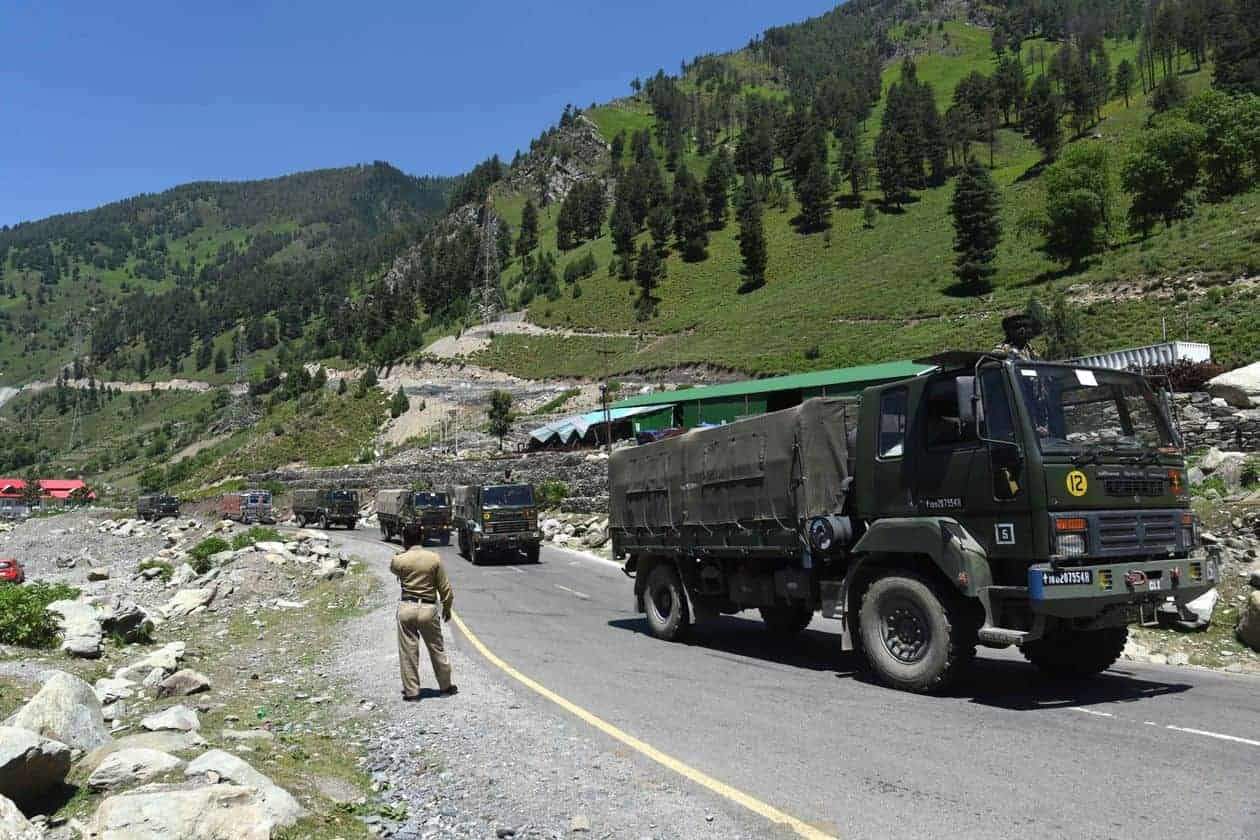China and India Locked in High-Altitude Arms Race Along Disputed Frontier

Battle lines are hardening along the remote Himalayan frontier that separates China and India, where the two Asian giants have been engaged in a competitive military construction spree, expanding bases and building airfields to accommodate bigger and more heavily armed forces.
A June clash along the countries’ disputed border that left 20 Indian soldiers and an unknown number of Chinese troops dead, according to New Delhi, shows the rising stakes in this high-altitude game of chicken between the two nuclear-armed powers.
With no resolution in sight for the two nations’ competing territorial claims, Chinese and Indian generals in recent years have steadily strengthened their positions, manned by thousands of troops, backed by tanks and artillery.
There are observation posts, altitude-acclimatization centers and barracks. And patrols move more swiftly over expanding military road networks.
Disputed Frontier
China and India have been fighting for decades over territory along hundreds of miles of their border
That, combined with disagreements over where, exactly, boundaries lie, is a recipe for friction and, at times, violence. Each side blames the other for sending soldiers into its territory hundreds of times a year while denying that its own troops are guilty of any transgressions.
At the same time, the activity has bred fears the other side will manage to change the balance of power in the area and eventually seek actual control of more strategically critical territory.
On the Indian side, military analysts say China is using tactics it has employed in the South China Sea, making incremental advances into disputed areas, asserting military control and then cementing territorial claims.
China “is essentially saying, you might have claims…but we’re just going to go ahead and build on them,” said Tanvi Madan, an expert on Sino-India relations at the Brookings Institution in Washington.
China’s foreign and defense ministries didn’t respond to requests for comment.
Chinese officials have repeatedly blamed India for taking what they term provocative actions in the disputed border area and for causing June’s deadly clash, while calling for joint efforts to ease tensions and resolve differences peacefully.
The modern states of China and India, born as poor nations in the mid-20th century on the accumulated foundations of historic empires, have never settled on an actual border.
Instead, there is something known as the Line of Actual Control, or LAC, a vague demarcation line. Broadly, India sees its control extending to where the Chinese withdrew at the end of a 1962 war between the two countries. China sees its control extending to what Chinese troops held in 1959 before the war.
In the east, China continues to claim what India considers a full-fledged state, Arunachal Pradesh. In the west, India claims a plateau known as Aksai Chin that connects Tibet with the northwest region of Xinjiang in China.
As military infrastructure-building has taken off along the frontier, it has introduced new uncertainty and more jockeying for position. That is what seems to have triggered the sudden deadly escalation along a deep river gorge in June.
India had recently completed a major road to an airport on its side of the LAC that would serve as an important new military supply route. Chinese troops then began to occupy part of the Galwan Valley to gain access to peaks overlooking the new Indian road.
“India’s increased presence in strength in these areas is not something which China wants,” said S. Dinny, who commanded an Indian army infantry battalion from 2015 to 2017 near the LAC.
June’s fight broke out after an Indian officer and several soldiers entered a Chinese camp in the Galwan Valley to demand the Chinese pull back. India says China had agreed to retreat after talks between local military commanders.
The resulting clash, involving hundreds of troops from each side, left dozens of Indian soldiers injured, in addition to the 20 killed. Others were taken prisoner. Indian officials say dozens of Chinese soldiers died, as well, although China hasn’t confirmed or denied there were deaths on its side.
Indian officials, who say they have tried unsuccessfully to persuade Chinese officials to clearly demarcate the areas it claims to control, accuse the Chinese of deliberately refusing as a way of keeping India off balance and guessing where to reinforce its side of the border.
Chinese officials say they have defined their claims clearly.
A series of ground-level military agreements after 1990 aimed to prevent confrontations in the overlap area and keep any that happened from spiraling out of control. They guide when and how patrols take place and constrain use of the most-lethal weapons, such as guns.
But they didn’t prevent clashes completely. Fist fights and vicious brawls broke out between patrols, some followed by tense standoffs that lasted weeks or even months, such as in 2013, 2014 and 2017.
The two sides started carrying steel rods and clubs, sometimes wrapped in barbed wire or embedded with metal spikes, on patrol and using them in these fisticuffs.
Now, the arrangements that for a time prevented deadly confrontations have frayed to the point of becoming almost obsolete, some analysts say.
“The old confidence-building measures regime that had kept peace in the LAC is in tatters,” said Manoj Joshi, a China expert at Observer Research Foundation, a Delhi-based think tank. “Neither side will trust the other.”
Photo: Indian army trucks traveled along a highway leading to Ladakh, India, in June. PHOTO: STRINGER/SHUTTERSTOCK











